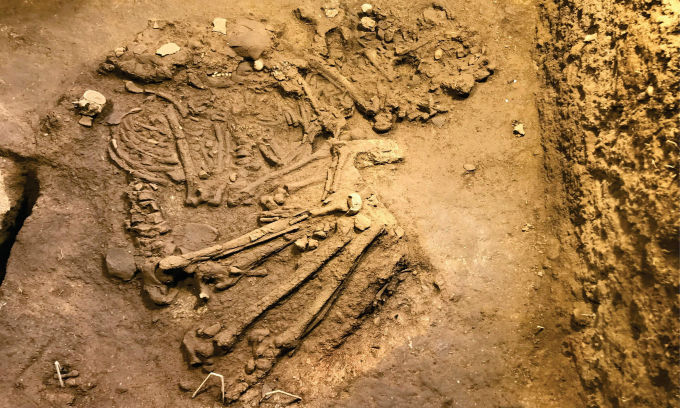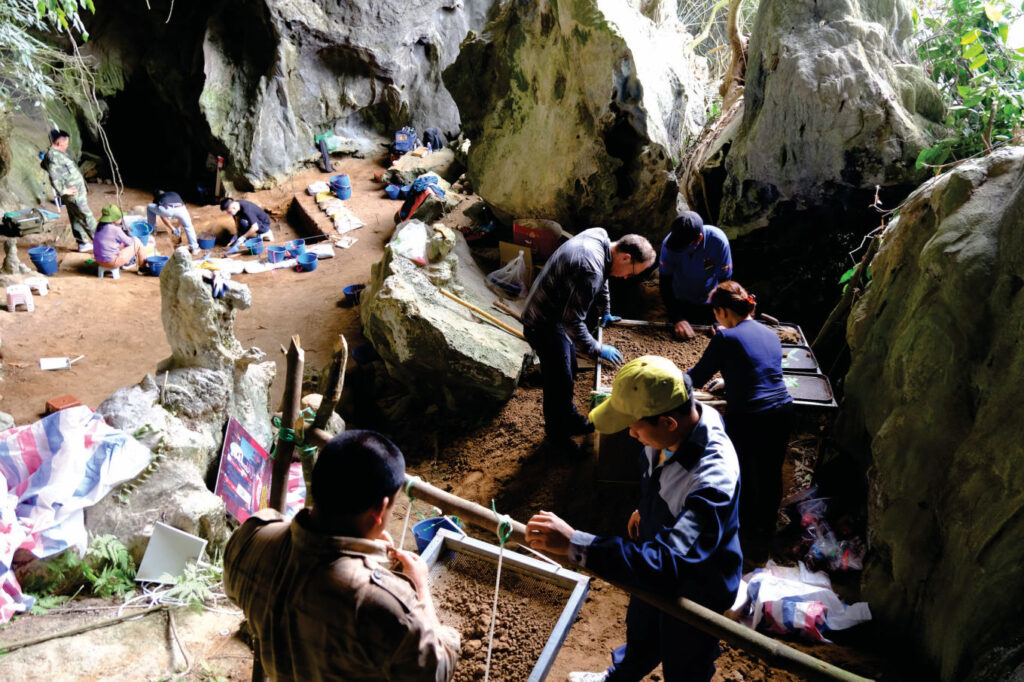10,000-Year-Old Human Remains Discovered in Vietnam
Skeletal remains dating back 10,000 years have been found in the northern province of Ha Nam, marking the oldest human fossil ever unearthed in Vietnam.

Mai Thanh Chung, director of the Ha Nam Department of Culture, Sports, and Tourism, said at a meeting Thursday that the remains were found during an excavation carried out by the Vietnam Institute of Archaeology at the Tam Chuc Pagoda Complex in Kim Bang District last March.
Archaeologists discovered three graves of children and adults, with the people buried in a kneeling position.
“This is the first time human remains dating back 10,000 years have been discovered in Vietnam,” said Chung.
In addition to human remains, scientists also found in the excavation pit mollusk shells and teeth and bones of small animals, which could have been food sources for ancient people.

Also during the March excavation at two caves in Kim Bang, the Institute of Archeology discovered prehistoric paleontological vestiges and material culture, including animal fossils and reddish-brown rope pottery fragments belonging to the Dong Son culture.
Dong Son was a Bronze Age culture in ancient Vietnam centered in the Red River valley of northern Vietnam from 1000 BC until the first century AD.
Within the Tam Chuc complex, the archeologists discovered sea mollusk shells along with stream snails. At the top of the mountain in the complex, they found pieces of pottery lying alongside mollusk pieces.
Many of the Kim Bang relics date back from the late Pleistocene to the late Holocene, or 10,000-12,000 years ago, according to the institute.
Researchers concluded that the district used to be a favorable area, inhabited by many ancient residents.